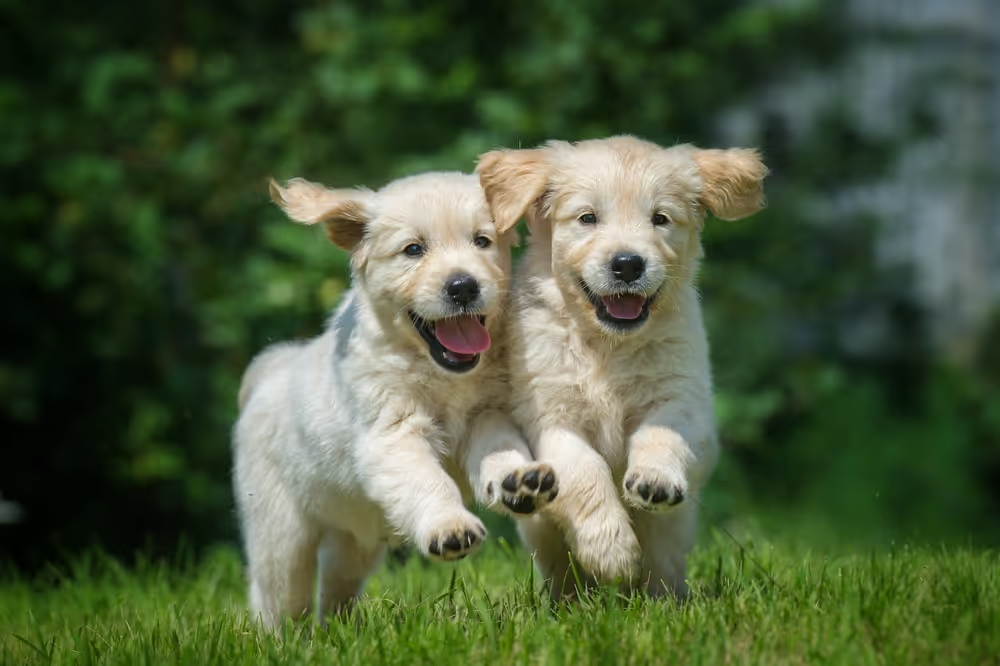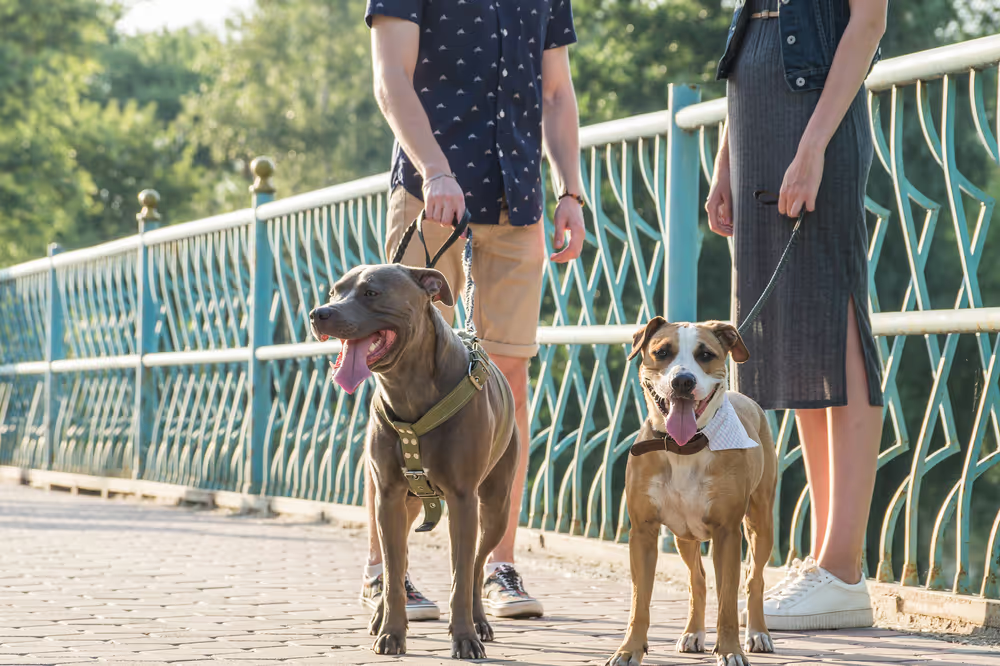
Dogs are social animals that love making new friends, but it’s important to understand how to introduce dogs to each other to avoid any potential issues. Your dog’s body language can play a huge part in determining if the introduction is going well or not.
Whether you want to learn how to introduce your dog to other dogs on walks or for playdates at the local dog park, we’ve got you covered. Discover a handful of useful safety tips that will help ensure a pawsitive experience for everyone.
Getting your dog used to being around other dogs is essential for their overall happiness and well-being. Dogs that regularly socialize with others are less likely to exhibit aggressive behavior while being more confident and friendly around other dogs. While some dogs are naturally adept at socializing, others may need a little more work. That said, those dogs that do need extra attention are still very trainable. With some guidance and patience, you can teach your pup how to be more comfortable or even show excitement around their new furry companions.
Before we explain how to introduce dogs to each other, it's important to understand basic dog behavior and body language. Dogs are pack animals, which means that they naturally establish a social hierarchy within the group. This means they may sometimes see another dog as a threat, leading to displays of posturing, barking, or growling. However, being a pack animal also means that dogs are highly social creatures. If they’re properly trained, they can learn to be comfortable around other dogs and even become playmates.
By understanding this dynamic and paying close attention to their body language, you can help anticipate and manage your dog's behavior around other dogs. For example, if your dog is cowering or hiding behind you, then they’re likely feeling uncomfortable. If they’re barking or growling at another dog, they’re likely feeling threatened, so you'll need to intervene. As you learn to interpret your dog's behavior, you will be better equipped to help them improve their social skills.
Setting yourself up for success is key when learning how to introduce your puppy to other dogs. Let's go through the steps to ensure the introduction goes as smoothly as possible.
Before your dog comes into contact with other dogs, make sure they have all their vaccinations, especially if they’re still a puppy. Preventing the spread of dangerous illnesses to other dogs is equally as important as keeping your own pup healthy.

Preparation is key when introducing dogs to each other. Here are a few useful items to have on hand:
It’s important to choose the right location for any new meetings. A lot of times, the best way to introduce dogs to each other is in a neutral space. Be sure to find a place that is spacious, safe, and free from distractions, like toys, food, or other dogs. Distractions will increase the chances of the dogs becoming overly excited — or the opposite: getting into a fight. Good locations include parks, quiet streets, or open fields. Avoid introducing dogs in someone's house or backyard, as dogs can get territorial when they’re on their home turf.

Dogs generally communicate through body language, vocalizations, and scent. By understanding a dog's communication signals, it’ll be easier to recognize when they’re feeling uncomfortable, stressed, or excited. Watch for signs of discomfort or anxiety in either dog — which includes raised hackles, growling, or excessive panting — and know when to intervene.
If either dog is displaying fearful or aggressive behavior, you should calmly and immediately end the interaction by distracting your dog. Once they're calm, you can try again, and keep rewarding them every time they show any sign of relaxation or confidence around the other dog.
Now that you're prepared, let's dive into the introduction process. This section will cover common introduction techniques, what to do if the introduction isn't going well, and how to get dogs to like each other.
The best way to introduce dogs to each other outdoors is through parallel walking. This is where you walk your dog alongside the other dog in a neutral territory and allow them to sniff each other. Start by keeping both dogs on a leash at a safe distance from each other. This way, if either dog is uncomfortable, you have a better chance of intervening quickly before a fight breaks out. You should also try to avoid direct eye contact, as one or both dogs may interpret it as a challenge or threat. This technique is great for helping the dogs get acquainted without feeling overwhelmed.
Should the dogs attempt to move closer, fixate on each other, or start getting overly excited, it's a sign that they might be too close for comfort. In this case, increase the gap between the dogs and allow them to simply observe one another from a distance before resuming the walk. And remember, reward them with treats if they stay calm!

These little incentives will help both dogs remain focused and relaxed during the introduction. It reinforces the idea that being around other dogs is a positive experience and can help the dogs to learn to like each other over time. Just remember that as the owner, you need to remain calm and patient. Your dog can sense your tension, so take a few deep breaths and give yourself a break if things don’t quite go as planned initially.
If the dogs aren't getting along, don't force them to continue the interaction. You can distract your dog by calling their name or offering them a treat. This can help break up the tension and encourage your dog to focus on something else.
If it gets too overwhelming, remove your dog from the situation completely and take a break. You can always try again later or on another day when both dogs are more relaxed. The last thing you want is for one or both dogs to become overwhelmed or aggressive, so take the time to get it right.
If you're worried about the introduction process or feel like it's not going well, consider speaking to a professional trainer. A qualified dog trainer can teach you how to properly introduce dogs and help you and your pup become more confident during the process. Remember, patience is key! Sometimes it takes a few attempts for dogs to feel comfortable with one another.
After the introduction, keep an eye on your dog — especially during the first few hours — to ensure they aren’t exhibiting aggressive or fearful behavior. Even if things appear to be going well, it can all change quickly. Some dogs don't react at all during the initial introduction, but this doesn't mean they won't show aggression later. As a result, make sure you monitor them and intervene if needed.
If your dog continues to show aggression or fear around other dogs, seek the help of a professional trainer or behaviorist to address the underlying issues. There could be a number of reasons why your dog is displaying this behavior, and a trainer can help you identify the root cause and develop a plan to address it. With patience and guidance, nearly every dog can eventually become more comfortable around other pups.
Remember that positive reinforcement is important, so reward your dog with treats or praise when they exhibit good behavior around other dogs.
With the right preparation and techniques, introducing your dog to others can be a great experience. And even though socializing is important for dogs, keep in mind that some pups will naturally find it easier than others.
Barkbus is perfect for even the most socially anxious pups. We provide a low-stress, one-on-one grooming service to ensure your fur baby is pampered in the most relaxed environment without the presence of other dogs, cages, or crates. Book your appointment today for a worry-free grooming experience!